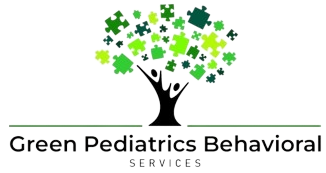
Applied Behavior Analysis (ABA) has become a widely recognized and utilized approach for addressing behavioral challenges in individuals with Autism Spectrum Disorder (ASD). But is ABA home therapy as effective as center-based therapy? In this blog post, we’ll look into the world of ABA home therapy, exploring its effectiveness, benefits, and considerations for implementation.
Basic Concepts of ABA Therapy
Before we explore the effectiveness of ABA home therapy, let’s first establish some fundamental concepts of ABA therapy. Understanding these basics will provide a solid foundation for our discussion.
1. Understanding Applied Behavior Analysis (ABA)

ABA is a systematic approach that applies principles of behaviourism to improve socially significant behaviours. It involves breaking down complex behaviors into smaller components and using reinforcement techniques to promote desired behaviors while reducing undesirable ones.
ABA therapy is widely used in various settings such as schools, clinics, and homes to address a range of behavioral challenges, including those associated with autism spectrum disorder, developmental disabilities, and mental health disorders.
Therapists and behavior analysts conduct thorough assessments to identify target behaviors and develop individualized intervention plans to the unique needs of each person. These interventions often employ evidence-based strategies such as positive reinforcement, prompting, shaping, and modeling to teach new skills and modify existing behaviors effectively.
ABA emphasizes data collection and analysis to track progress objectively, allowing practitioners to make data-driven decisions and adjust interventions as needed for optimal outcomes. This structured and empirical approach makes ABA a highly effective method for promoting positive behavior change and improving the quality of life for individuals across diverse populations.
2. Components of ABA Therapy
ABA therapy typically consists of several key components, including assessment, intervention design, implementation, and ongoing evaluation. Each component plays a crucial role in developing and implementing effective behavior intervention plans.
Throughout the process, collaboration with caregivers, teachers, and other relevant stakeholders is essential to ensure consistency and generalization of learned behaviors across different environments.
By creating a collaborative approach, ABA therapy maximizes the likelihood of long-term success and enhances the individual’s ability to function independently and thrive in various social contexts. This approach underlines the importance of addressing not only the individual’s behaviors but also the broader social and environmental factors that influence their development and well-being.
3. Benefits of ABA Therapy
ABA therapy offers numerous benefits for individuals with ASD, including improvements in communication, social skills, academic performance, and daily living skills. Additionally, ABA techniques can be tailored to meet the unique needs and preferences of each individual.
Key Considerations for ABA Home Therapy
Now that we’ve covered the basics of ABA therapy, let’s shift our focus to ABA home therapy specifically. Implementing ABA techniques in a home setting presents both opportunities and challenges. Here are some key considerations to keep in mind:
Creating a Structured Environment
One of the essential aspects of ABA home therapy is establishing a structured and predictable environment. Consistent routines and clear expectations can help individuals with ASD feel more comfortable and confident in their surroundings.
Incorporating Naturalistic Learning Opportunities
ABA home therapy provides the flexibility to incorporate naturalistic learning opportunities into everyday activities. These opportunities allow individuals with ASD to generalize skills learned during therapy sessions to real-life situations.
Collaborating with Family Members
Family involvement is crucial for the success of ABA home therapy. Collaborating with family members not only enhances consistency in implementing intervention strategies but also empowers caregivers to support their loved ones’ progress effectively.
Is ABA Home Therapy Equally Effective?

With a solid understanding of ABA therapy fundamentals and key considerations for ABA home therapy, we can now address the burning question:
To answer this question, it’s essential to recognize that the effectiveness of ABA therapy, whether delivered at home or in a clinical setting, depends on various factors, including the individual’s unique needs, the quality of intervention, and the consistency of implementation. While ABA home therapy offers several advantages, such as increased flexibility, naturalistic learning opportunities, and family involvement, it may not be suitable for every individual with ASD.
Ultimately, the decision to pursue ABA home therapy should be based on careful consideration of the individual’s needs, preferences, and available resources. Consulting with qualified professionals and exploring all available options can help families make informed decisions about the most appropriate intervention approach for their loved ones.
Conclusion
In conclusion, ABA home therapy holds promise as an effective intervention approach for individuals with ASD, offering unique benefits and opportunities for personalized support. By understanding the fundamentals of ABA therapy and considering key factors for successful implementation, families can harness the power of ABA techniques to promote meaningful progress and enhance the quality of life for individuals with ASD.
Whether you’re considering ABA home therapy for your loved one or simply seeking to learn more about this approach, we hope this guide has provided valuable insights and guidance. Remember, every individual is unique, and finding the right intervention approach may require patience, persistence, and collaboration with knowledgeable professionals.
